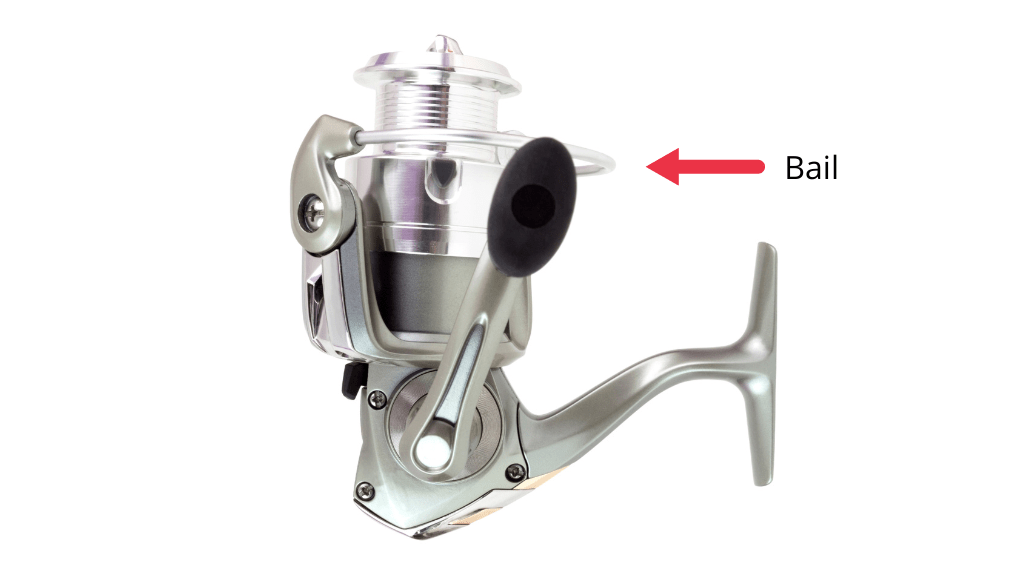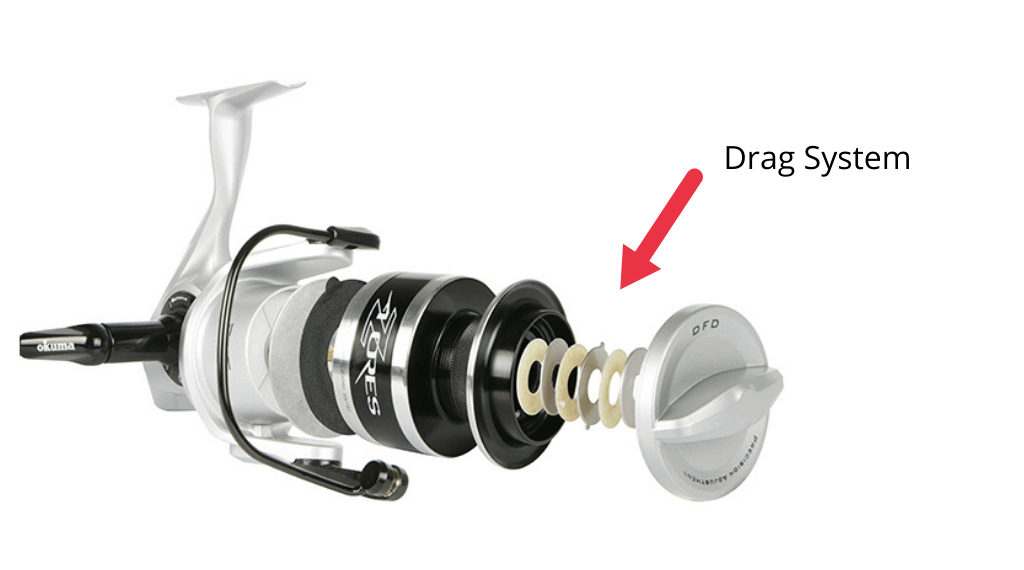Fishing can be relaxing, until your reel malfunctions. If you have ever encountered a problem where your fishing reel spins backward unexpectedly, you aren’t alone. Many anglers run into this problem at some point, but not everyone knows how to fix it.
You may be able to repair the reel easily at home. It all depends on what’s causing the problem and how comfortable you are taking the fishing reel apart.
So keep reading to learn the three most common reasons why a fishing reel spins both ways and how to fix them.
Cause 1: The Anti-Reverse Mechanism
The most common reason your reel spins both ways is an issue with the anti-reverse mechanism. This mechanism is a key feature that prevents the reel from spinning backward and engaging the drag.
Check the Anti-Reverse Switch First
Before you tear apart the entire fishing reel, it’s best to start with the simplest solution, the anti-reverse switch. Many fishing reels feature a switch to engage the anti-reverse and prevent the reel from spinning backward. If you aren’t sure where your switch is, check the side around the bail or button.

It seems silly, but it’s easy to accidentally disengage the switch and turn off the anti-reverse function. Double-checking the anti-reverse switch could save you a lot of time and frustration. If the anti-reverse switch is engaged or appears jammed or otherwise damaged, you need to disassemble the unit.
How to fix the Anti Reverse on a Spinning Reel
Any damaged, misaligned, or missing pieces can disrupt the anti-reverse function and cause backward reel spins. Thankfully, it’s usually a relatively easy fix with a little skill. This repair requires:
● A screwdriver
● A ½-inch socket wrench
● Some patience.
Note that you need a screwdriver that fits all the screws on your fishing reel. This might involve more than one size as you work through the various layers.
1. Remove and Open the Mechanism
Grab a screwdriver and start by removing the cover. Once inside, you need to remove several components to access the clutch bearing.
● Spool washers
● Rotor nut (you might need the ½-inch socket wrench to dislodge it)
● Rotor assembly
Set the cover and pieces aside so you don’t risk losing anything. It’s a good idea to lay the pieces out in the order you remove them to make reassembly easier.
2. Access the Clutch Bearing
You might need to remove more screws near the rim to reach the clutch assembly. Carefully extract the entire clutch assembly from the casing.
Be careful to keep the pinion in place because it’s extremely sensitive. Though the pinion doesn’t look like much, that tiny gear is essential to the reel’s function. Damaging the pinion would effectively end your repair hopes.
3. Check the Roller Clutch Sleeve
Locate the roller clutch sleeve nestled neatly within the larger bushing. Make sure it’s properly aligned and functional within the clutch. Correcting a misalignment should solve any issues with backward reel spins.
4. Check the Spring
Under the spool, near the reel handle, you will find a small spring. If it’s not properly aligned it can throw off the entire system. Use a fine point (a pen or pencil works well) to gently pop the spring back in place.
5. Loosen the Hammer Piece
Accessing and adjusting the hammer is not easy, so you might want to leave it to a professional. But, if you’re up for the tasks, access the inner gears and locate the gear that catches on the anti-reverse mechanism. Loosening it might correct your problem.
6. Reassemble the Reel
Carefully put the pieces back in reverse order and replace the cover. Test the mechanism to make sure it works properly again.
If the reel still spins in both directions, it’s best to contact a professional for help. Complicated repairs or situations where you can’t identify the cause are best left to the pros.
What To Do If You Have Broken Components
If the roller clutch sleeve or any other components show signs of damage, you need to replace them. Replacing reel parts requires a professional who has access to the parts and the proper tools to complete the job. Plus the experience to repair the mechanism correctly.
You can also watch this video to learn How to Fix the Anti-Reverse on a Spinning Reel.
Cause 2: The Bail
If your reel spins both ways, you might want to check the bail. The U-shaped wire serves as a gatekeeper by controlling when the line releases or retracts. Double-check the installation to make sure everything looks right with the bail.

When you set the bail to an open position, it allows the line to release for casting. Closing the bail should prevent the line from reversing. If the reel spins both ways when the bail is closed, you need to address the bail mechanism.
How to Fix It
Remove the bail and carefully open it up to examine the inner mechanism. Look for any broken pieces that could be causing the problem. You might have to contact the manufacturer to replace any broken pieces or the entire mechanism.
Cause 3: Incorrectly Set or Broken Drag
The drag system could also be the reason the reel spins both ways. Since the drag determines the amount of pressure the line can take. And an incorrect setting or damaged mechanism could cause the spool to retract at inopportune times.

When the drag is set too high, it won’t stop the line from going the wrong way. As the fish increases its pull, the mechanism won’t adapt to the pressure, and the line will flow out.
But, setting the drag too low creates the opposite problem. It lets the fish pull the line out before you’re ready.
How to Fix It
Start by cleaning the reel, especially if you tend to fish in saltwater. Any residue on the line or mechanism can impact the drag’s function.
After you clean the components, it’s time to recalibrate the drag. It’s the easiest and most effective way to correct drag issues. You might have to experiment with increasing and decreasing the drag. It’s best to consider the size of fish you typically reel in. Try a few tests and experiments to see if recalibration resolves the reel spin problem.
If the reel spins both ways, you might have a broken mechanism, meaning a complicated fix. You need to disassemble the mechanism and carefully clean each piece. Look for any broken components and replace them. Then, reassemble the drag to see if that solves the problem.
Fixing a broken drag mechanism is complex and requires a lot of patience. Unless you have the skill to work with these parts, you might want to enlist a professional to fix the mechanism.
Final Thoughts
The next time somebody asks, “why does my fishing reel go backwards,” you know what to do! Remember that the most obvious solution typically requires fixing the anti-reverse, but don’t forget to check the bail and drag. Once you find the source of the problem, you might be able to fix it for them.
If it’s not an easy fix, reach out to a professional. It is always best to leave complex repairs and replacement of broken parts to experienced professionals.

